![2016-05-16_16.21.03[1]](https://blogs.iwu.edu/lrbmt2016/files/2016/05/2016-05-16_16.21.031-286x300.jpg)
Author: Birgita Sif
Illustrator: Birgita Sif
Publisher/Year: Candlewick Press, 2012
Pages: 29
Genre: Realistic Fiction
Analysis:
“Oliver felt a bit different,” Sif writes (p. 2); a young, bespectacled boy dressed all in green, Oliver enjoys his solitude and imaginative play with his stuffed animal friends. Alone, Oliver can go on any imaginative adventure he pleases, but he soon discovers that his friends cannot actually listen to him play piano. Then, one day, a run-away tennis ball leads Oliver to someone new and different too: Olivia.
Introverted, imaginative, and solitude-loving readers can personally identify with Oliver’s need to freely exist in his own world. Many of these same readers can also relate to Oliver’s desire for human companions that can listen and respond, but his hesitancy, as an introvert, to reach out on his own. Oliver speaks to “all those who have ever felt a bit different,” as Sif writes in her dedication. For more extroverted and social readers, Oliver provides a window into the world of an often overlooked group: introverts. Sif portrays introverts like Oliver with both respect and a critical eye; she celebrates their contentedness with being alone but also highlights how complete solitude can even be too lonely for the introvert. For introverted readers, Oliver models how one can step out of their comfort zone and take a leap of faith into new things. Oliver encourages introverted readers to seek companionship in their human peers, and not solely with their toys.
![2016-05-16_16.20.22[1]](https://blogs.iwu.edu/lrbmt2016/files/2016/05/2016-05-16_16.20.221-300x159.jpg)
Power is not distributed between characters but embodied in fate—the happy coincidence that Oliver’s run-away tennis ball led him to new beginnings with a girl that is different just like him. Oliver contains a very limited view of culture, beyond that of introverts. Every character is white and able-bodied. It is possible, therefore, that Oliver could send a rather unintended message that there is only hope of new beginnings for white introverted children.
The repetition of how Oliver was “a bit different,” “but it didn’t matter,” communicates an important transformation that Oliver, and many of us, undergo in our lives. At first, Oliver believed that enjoying being different meant solitude; later, he discovers that he could befriend Olivia because they are both different and could be so together. All other text elaborates on this realization of Oliver’s and his ensuing leap of faith. Sif uses color symbolically in her illustrations. Oliver, his toys, and Olivia are all drawn with colors far more vibrant (i.e. red and green) than the dim and subdued grays, blues, and golds of the real world they live in. This color contrast symbolizes how Oliver and Olivia are different, yet perfect companions. The contrast also compares the freedom and contentedness Oliver and Olivia feel in their imagined world to the isolation they feel around others. Sif’s illustration of Oliver running to the right and through the open gate to Olivia’s yard shows Oliver’s growing acceptance that his toys might not be good enough companions for him. Overall, Oliver supports individualism and the idea that people should not have to change who they are to be friends. Although Oliver celebrates the power of human companionship, it rather idealistically shows that a perfect someone exists for everyone and fate (vs. human initiative) will bring soulmates together.

![2016-05-16_16.22.46[1]](https://blogs.iwu.edu/lrbmt2016/files/2016/05/2016-05-16_16.22.461-219x300.jpg)
![2016-05-16_16.21.53[1]](https://blogs.iwu.edu/lrbmt2016/files/2016/05/2016-05-16_16.21.531-300x214.jpg)
![2016-05-16_16.27.04[1]](https://blogs.iwu.edu/lrbmt2016/files/2016/05/2016-05-16_16.27.041-241x300.jpg)
![2016-05-27_11.03.56[1]](https://blogs.iwu.edu/lrbmt2016/files/2016/05/2016-05-27_11.03.561-300x198.jpg)
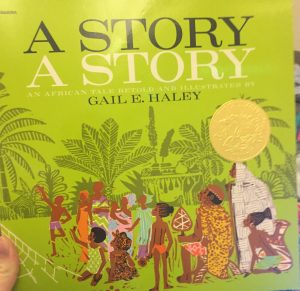 Author(s): Gail E. Haley
Author(s): Gail E. Haley
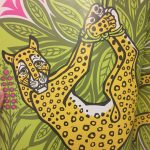
 Author(s): Eve Bunting
Author(s): Eve Bunting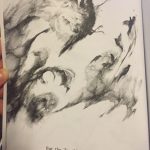
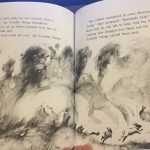
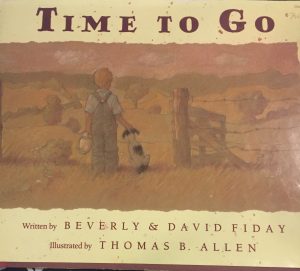 Author(s): Beverly and David Fiday
Author(s): Beverly and David Fiday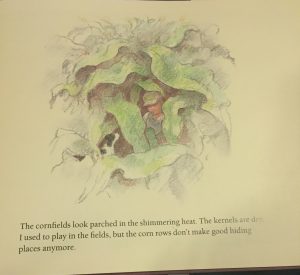
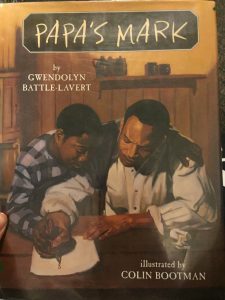 Author(s): Gwendolyn Battle-Lavert
Author(s): Gwendolyn Battle-Lavert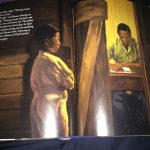
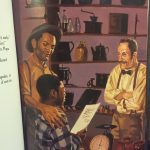
 Title: Stand Tall Molly Lou Melon
Title: Stand Tall Molly Lou Melon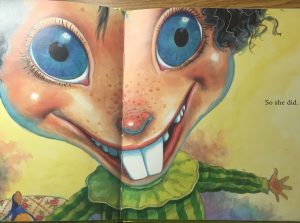 e did” shows the reader that Molly Lou Melon took her grandmother’s advice to heart. The lack of frames in the illustrations allows the reader to connect to Molly Lou Melon on a personal level. Ideologically, this book has many layers. One layer shows that if people stand up to bullies, the bullying stops. Each time Ronald Durkin bullied Molly Lou Melon, she did something that all her other classmates loved. Eventually Ronald Durkin stopped bullying her. The second layer teaches children to love who they are and what they look like. Molly Lou Melon has a lot of self confidence when it comes to doing anything. Molly Lou Melon’s grandmother teaches her that she can accomplish anything if she carries herself with confidence, and that’s just what she does. This book teaches children to value self confidence and individuality.
e did” shows the reader that Molly Lou Melon took her grandmother’s advice to heart. The lack of frames in the illustrations allows the reader to connect to Molly Lou Melon on a personal level. Ideologically, this book has many layers. One layer shows that if people stand up to bullies, the bullying stops. Each time Ronald Durkin bullied Molly Lou Melon, she did something that all her other classmates loved. Eventually Ronald Durkin stopped bullying her. The second layer teaches children to love who they are and what they look like. Molly Lou Melon has a lot of self confidence when it comes to doing anything. Molly Lou Melon’s grandmother teaches her that she can accomplish anything if she carries herself with confidence, and that’s just what she does. This book teaches children to value self confidence and individuality.
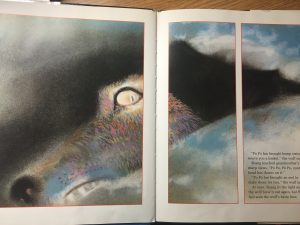
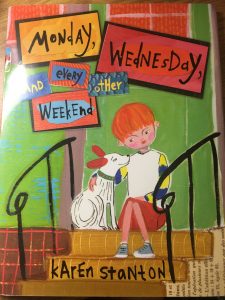 Author: Karen Stanton
Author: Karen Stanton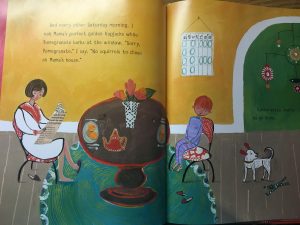 e days that Henry will spend there. The author and illustrator uses Pomegranate to display most of the emotions felt by children during times of divorce within their family. For example, Pomegranate runs away and Henry knows just where to find him. Henry runs to his old house, “the house where we all used to live together,” and finds Pomegranate there. However, she portrays the main character Henry as happy and well adjusted to his new life, but does not underplay the emotions Henry experiences. The author also portrays each parent positively, listing the perks of living in each house. While searching for the dog, the illustrator creates a map that allows the reader to see the town in which Henry lives. The dots on the map show where Henry goes to find his dog. This book handles the feelings surrounding divorce in a positive way. This book can be used by families who are struggling to establish a new way of living after divorce. This book is relatable to a lot of children who experience this shift in family dynamics.
e days that Henry will spend there. The author and illustrator uses Pomegranate to display most of the emotions felt by children during times of divorce within their family. For example, Pomegranate runs away and Henry knows just where to find him. Henry runs to his old house, “the house where we all used to live together,” and finds Pomegranate there. However, she portrays the main character Henry as happy and well adjusted to his new life, but does not underplay the emotions Henry experiences. The author also portrays each parent positively, listing the perks of living in each house. While searching for the dog, the illustrator creates a map that allows the reader to see the town in which Henry lives. The dots on the map show where Henry goes to find his dog. This book handles the feelings surrounding divorce in a positive way. This book can be used by families who are struggling to establish a new way of living after divorce. This book is relatable to a lot of children who experience this shift in family dynamics.